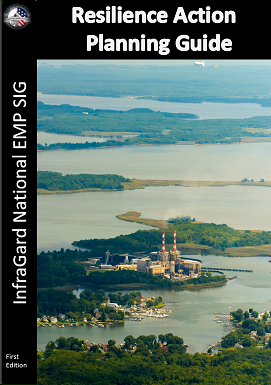| NIPP Security and Resilience Challenge Program | |
| Excerpt from “Strengthening Healthcare and Public Health Sector Risk Management and Resilience”:
“A number of high-impact threats to critical infrastructure can result in a regional or nationwide months-long power outage, making it unlikely for timely outside help to arrive. Hospitals are encouraged to gain the capacity to make and store enough power on-site to operate in island mode indefinitely without outside sources of power or fuel and protect on-site capabilities from threats that could impact regional commercial power systems. This handbook outlines challenges and opportunities to solve these problems so hospitals, healthcare facilities, and other resources might become more resilient.” |

|

|
Excerpt from “Resilient Hospitals Handbook”:
“Healthcare and public health leaders are responsible to their boards of directors and patients for, among many other things, the safety and security of their critical infrastructure. Standard operating plans for hospitals requires evacuation when the power is out for an extended period and backup generators cannot be refueled. A shortcoming of this policy is that long-term regional or nationwide outages would require shutting down hospitals when they are needed most.” |
| “Lights OUT! Summary and After Action Report”
This report contains information regarding a Table Top exercise executed with St. Francis Medical Center in Colorado Springs. The After Action Report can be applied to any and all Heath Care and Infrastructure. It also contains Modules that were used in the exercise.
|

|
“Resilient Hospitals Handbook” Funding and support provided by the U. S. Department of Homeland Security, National Protection and Programs Directorate, Office of Infrastructure Protection, through the Technology Development & Deployment Program (TDDP) which is implemented by The National Institute For Hometown Security (NIHS).





